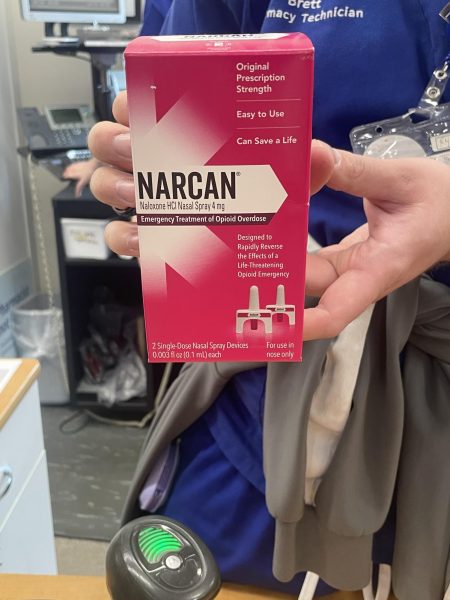Administration Confronts Sexual Harassment and Assault
“Shame”
We applaud the administration for conducting the sexual harassment assemblies of Sept. 20.
This undertaking indicates a genuine effort to address the problem. While the assemblies were well-intended, we also hope to offer constructive criticism.
The staff succeeded at presenting a clear definition of sexual harassment. As explained in the slideshow,
“Sexual harassment is ANY unwelcome or unwanted pressure, verbal, visual or physical contact of a sexual nature. It is a “power play” and may include: spreading sexual rumors, touching someone inappropriately, repeatedly propositioning someone when he/she has said no, criticizing or insulting someone’s sexuality (including a person’s sexual orientation), telling sexually offensive jokes, making comments about someone’s clothing or body, making suggestive gestures or noises or pressuring someone for a date.”
Beachwood’s Director of Security Officer CJ Piro explained the goal of the boys’ assemblies.
“We wanted to present a message that was clear to boys that this type of action is harassing, this should not be done, [and] here are some real life examples,” he said.
We appreciate that harassment was clearly defined, and we thank the administration for pointedly acknowledging that mocking sexual orientation is sexual harassment.
On the other hand, we feel that boys and girls deserve access to the same information. Even if the assemblies must be segregated by sex, we believe that girls deserve to know what was said at the boys’ assembly, and vice versa.
According to guidance counselors Meghann Sullivan and Liz Osicki, who led the girls’ assembly, keeping the assemblies separated by gender fosters a safe environment for girls to talk about their experiences without being uncomfortable. They said consent is an extremely important topic for both boys and girls, but that this idea can be portrayed in different ways depending on the audience (girls or boys). They mentioned a gap in maturity levels they have observed between girls and boys, which may have impeded the serious discussions that were had in the girls’ assembly.
Piro explained that the separation was intended to ensure that both groups felt comfortable.
“The assemblies were separated so both boys and girls could be more confident saying personal things,” Piro said.
However, the narrative created by segregating boys and girls has the potential to be misunderstood by students; men sexually harassing women, while very prevalent, is not the only kind of sexual harassment. Would not a unisex assembly better communicate the reality that any person can be sexually harassed by any person, no matter their gender or sexuality?
Additionally, rape was not discussed in the girls’ assembly. One of the main messages was to stop unwanted actions before they escalate. The message for the boys was more extreme because it included rape.
Additionally, we wish to discuss two stories told at the boys’ assembly that were not mentioned at the girls’.
One involved the rape of a BHS student at a party. She was inebriated and unconscious when the rape began. She woke in the middle of it. This story is shocking, but what is even more shocking is the frequency of such events. A recent Harvard study found that 75% of victims of rape on college campuses were inebriated at the time of the crime. Furthermore, according to the US National Library of Medicine, there is a 94% chance of PTSD among victims of sexual assault.
The second story was about a rape accusation handled by the school. After being caught having sex with a boy, a student alleged that she was coerced. A week later, she admitted that the accusation was a lie.
We do not wish to argue against something that the staff experienced, but we wonder if the inclusion of this anecdote does more harm than good. The vast majority of reports of sexual assault are decidely not false (90-98%).
Although administrators never suggested that rape victims in general are liars, we worry that the inclusion of this story may inflate students’ belief that sexual assault survivors should be questioned, a belief that is already far too prevalent among men. Such an assembly should work to buoy the ethos of accusers, not potentially work to further stigmatize them.
Administrators told us that the latter story was included for the “scare factor,” demonstrating the adverse effects of not explicitly asking for consent.
“The moral was you just never know. You need that communication [for consent],” Guidance Counselor Jason Downey said.
“[A sexual assault charge] will ruin your life; it will cause you to register as a sex offender. Even…in the moment just before intercourse, make sure it is consensual,” Piro added. “…Look at the trauma it could cause a woman if it is not….”
Although a scare factor may be effective while stressing the importance of consent, we believe there should be greater emphasis on the moral gravity of sexual assault, including the reality of its effects on victims, instead of the repercussions.
“I think this was a starting point,” Sullivan said. “I don’t want to think of these assemblies as Beachwood’s complete message on sexual harassment—[it’s not] just a one-off, that’s not the intention of this.”
We hope that administrators’ efforts continue to make BHS safer. If you are in a crisis, seek help. Every administrator, as well as Officer Piro, is trained to help students with cases of sexual harassment. In addition, a formal complaint can be filed with the Director of Pupil Services Lauren Broderick.
If you are uncomfortable with coming to school staff, call RAINN at 800.656.HOPE or Day One at 866.223.1111.
If you would like to contribute to the ongoing efforts to address this issue in our school, contact Officer CJ Piro.









![“My parents have always said that education is important. My parents are Chinese immigrants, I'm Chinese American, [and that's a] value that has always been ingrained in our community,” said Senior Lyndia Zheng, pictured with Tony Zheng](https://bcomber.org/wp-content/uploads/2025/10/DSC_4244-600x400.jpg)

